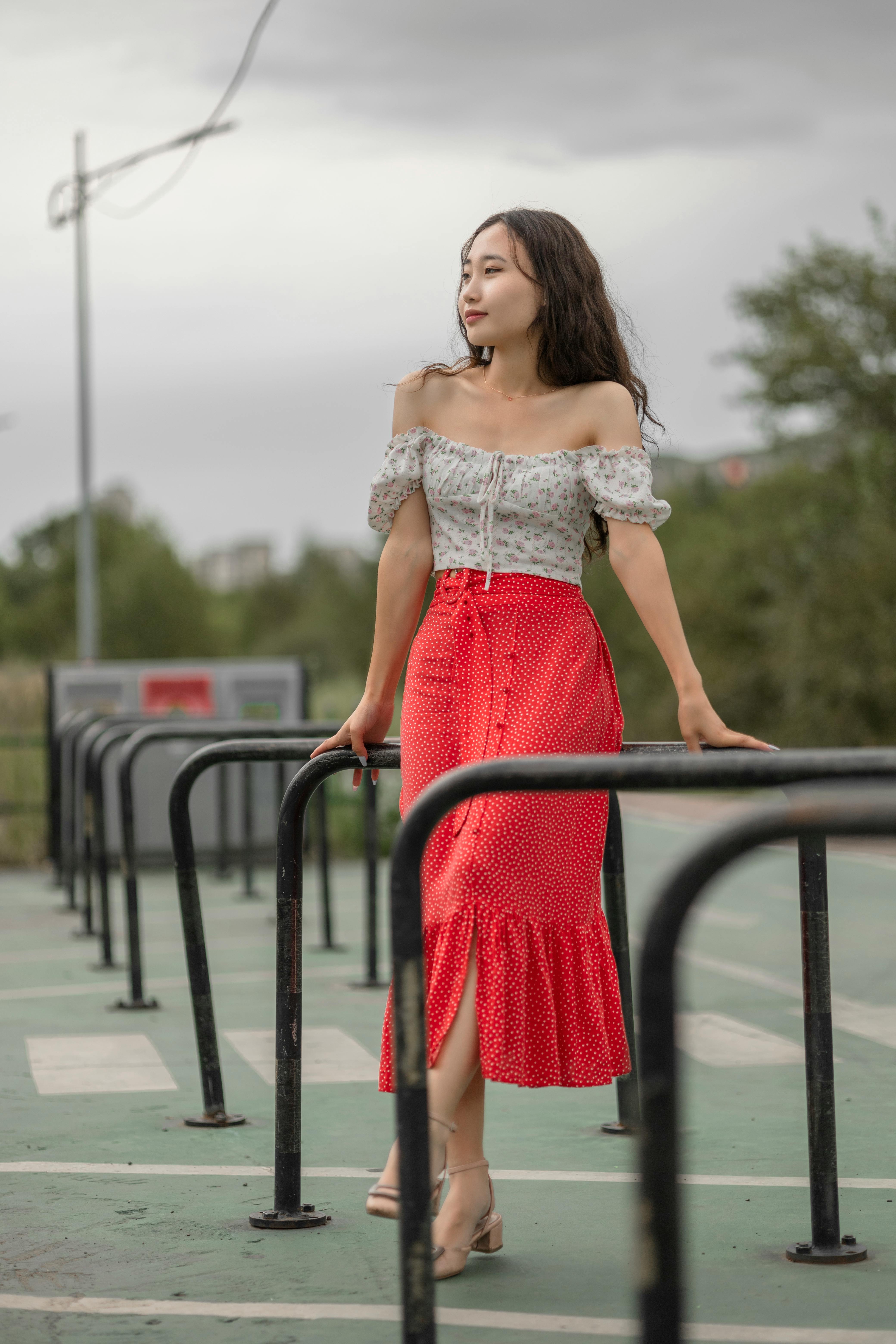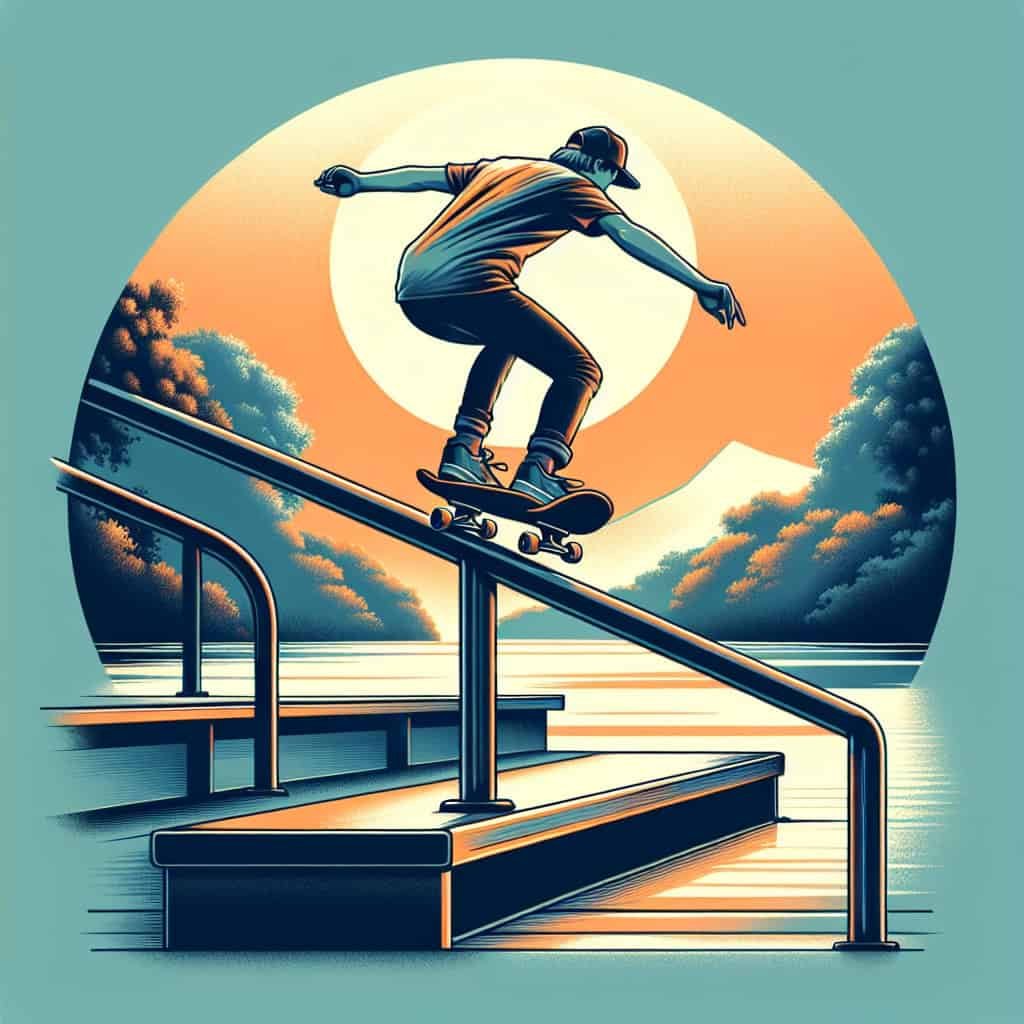Skateboarding is not just about performing cool tricks and stunts; it also requires a great deal of balance and control. To excel in balancing on rails and ledges, skateboarders employ a range of strategies that help them achieve stability and finesse. From mastering foot placement and maintaining a low center of gravity to honing their core strength and body awareness, these enthusiastic athletes have a repertoire of techniques up their sleeves. In this article, we explore some of the most effective strategies that skateboarders use to enhance their balance on rails and ledges, providing you with valuable insights to up your skateboarding game.
Choosing the Right Skateboard
Skateboarding is an exciting and thrilling sport that requires the right equipment to fully enjoy the experience. One of the most important decisions you need to make as a skateboarder is choosing the right skateboard for yourself. It is crucial to select a skateboard that suits your size, riding style, and personal preferences. Let’s explore some key factors to consider when choosing the right skateboard.
Selecting the Appropriate Board Size
The size of your skateboard plays a significant role in your overall skateboarding experience. Skateboards come in various sizes, typically measured by the width of the deck. Choosing the right board size depends on your height, shoe size, and riding style. A wider board provides more stability and control, making it suitable for beginners or skaters with larger feet. On the other hand, a narrower board allows for increased maneuverability and is ideal for technical tricks.
Considering Different Deck Shapes
Skateboard decks come in a variety of shapes, each catering to different styles of skateboarding. The most common deck shapes are the standard popsicle shape, which is symmetrical and versatile, and the old school shape, which has a wider and more rounded nose and tail. The shape you choose depends on your skating style and preferences. If you enjoy street tricks and flips, the popsicle shape is a great choice. However, if you’re more inclined towards cruising or pool skating, the old school shape might be more suitable.
Choosing the Right Wheels
Wheels are another crucial component of your skateboard that can greatly impact your riding experience. The size and hardness of the wheels play a significant role in the board’s performance and the type of terrain you skate on. Larger wheels provide more speed and roll over cracks and pebbles more easily, making them ideal for cruising and downhill riding. Smaller wheels are better suited for technical tricks and street skating, as they offer more control and responsiveness. Additionally, the hardness of the wheels affects grip and slide ability, with softer wheels providing more grip and harder wheels offering better slide capabilities.
Using Grip Tape
Grip tape is a gritty adhesive layer that covers the top surface of your skateboard deck. It provides the traction and grip necessary for maintaining control during tricks and maneuvers. When choosing grip tape for your skateboard, consider the level of grip you desire. Coarse grip tape offers enhanced traction, making it easier to stick your landings and maintain control on rails and ledges. Fine grip tape provides a smoother surface, allowing for quicker foot movements and slides. Experiment with different grip tapes to find the one that suits your skating style and preferences the best.
Developing Proper Stance and Posture
To improve your balance on rails and ledges, it is essential to develop a proper stance and posture on your skateboard. Having a stable and balanced position will help you maintain control and execute tricks with precision. Let’s delve into some key techniques for establishing a solid foundation.
Establishing a Stable Foot Placement
Finding the optimal foot placement on your skateboard will give you a solid foundation for balance. For a regular stance, place your front foot across the deck with the ball of your foot positioned directly over or slightly behind the front truck bolts. Your back foot should be positioned on or just behind the tail, with the heel hanging off slightly. Experiment with different foot positions to find what feels most comfortable and stable for you.
Maintaining a Balanced Body Position
Maintaining a balanced body position is vital for stability while skating on rails and ledges. Keep your knees slightly bent, shoulders squared, and weight evenly distributed across both feet. Avoid leaning too far forward or backward as it can throw off your balance. Engaging your core muscles will also help you maintain an upright and centered position, enhancing your overall stability.
Bending Your Knees for Flexibility
Bending your knees is crucial for maintaining flexibility and absorbing impact while skateboarding on rails and ledges. As you approach a rail or ledge, make sure to initiate a slight knee bend to prepare your body for any sudden movements or adjustments needed during the trick. This will allow you to adapt to the terrain and maintain your balance more effectively.
Keeping Your Eyes Focused on the Rail/Ledge
Keeping your eyes focused on the rail or ledge you’re skating on is essential for developing a strong sense of balance. By fixing your gaze on the target, you can better anticipate and react to any changes or obstacles that may come your way. This visual focus helps train your muscles to make the necessary adjustments for maintaining balance and executing tricks accurately.

Warming Up and Stretching
Before diving into any skateboarding session, it is crucial to warm up your body and engage in stretching exercises. Warming up prepares your muscles for the physical demands of skating and reduces the risk of injuries. Stretching helps improve flexibility and enhances your overall balance. Let’s explore the importance of warm-up exercises and dynamic stretches.
Importance of Warm-up Exercises
Warm-up exercises are essential to get your blood flowing and increase your body temperature before engaging in any physical activity. They help loosen your muscles and joints, increasing your range of motion and preventing stiffness. Incorporating dynamic movements such as jumping jacks, high knees, and arm circles into your warm-up routine will prepare your body for the demands of skateboarding.
Dynamic Stretches for Balance Improvement
Dynamic stretches actively engage your muscles and improve your range of motion. These stretches involve moving parts of your body through a full range of motion repetitively. Dynamic stretching exercises such as leg swings, lunges with a twist, and torso rotations are particularly beneficial for skateboarders, as they target the muscles used for balance and stability.
Targeting Key Muscles for Stability
To enhance your balance on rails and ledges, it is important to target key muscles that contribute to stability. The muscles in your lower body, including your quadriceps, hamstrings, and glutes, play a vital role in maintaining balance and absorbing impact. Incorporate exercises such as squats, lunges, and calf raises into your workout routine to strengthen these muscles and improve your overall stability.
Increasing Flexibility through Stretching
Flexibility is imperative for skateboarders as it allows for greater freedom of movement and reduces the risk of muscle strains. Including static stretches in your routine after your warm-up and workout sessions will help increase flexibility. Focus on stretching your hip flexors, groin, hamstrings, and calves to improve your balance and prevent stiffness.
Mastering Basic Balance Techniques
To excel in skateboarding and improve your balance on rails and ledges, mastering basic balance techniques is essential. These techniques lay the foundation for more advanced tricks and maneuvers. Let’s explore some fundamental techniques that will help you develop and refine your balance skills.
Practicing Manual Balance
A manual is a balance trick where you ride only on your back wheels while keeping the front wheels elevated. This trick requires precise weight distribution and control. Find a flat and smooth surface to practice balancing on your back wheels. Start by bending your knees slightly and shifting your weight toward the tail of the board. Use your body movements to maintain balance and try to keep the board balanced for as long as possible. Practicing manuals regularly will improve your overall balance and control on rails and ledges.
Perfecting Wheelie Balance
A wheelie, also known as a “nose manual,” is a balance trick where you ride only on your front wheels while keeping the back wheels elevated. Like the manual, this trick requires precise weight distribution and control. Start by finding a flat and smooth surface and slowly shift your weight towards the front of the board. Practice gradually raising the back wheels off the ground and maintaining balance. Concentrate on keeping your body centered and making slight adjustments with your feet and body to maintain balance. Perfecting the wheelie balance will greatly enhance your overall control and stability on rails and ledges.
Improving Board Control
Having proper control over your skateboard is essential for maintaining balance and executing tricks effectively. Practice riding in a straight line, turning, and carving to improve your overall board control. Focus on shifting your weight and using your feet to steer the board smoothly. The more comfortable and confident you become with controlling the skateboard, the better your balance on rails and ledges will be.
Enhancing Ollie Balance
The ollie is a fundamental trick that serves as the foundation for many other skateboard tricks. It involves popping the skateboard in the air by slamming your tail down while sliding your front foot upward. As you progress in skateboarding, focus on improving your ollie technique and balance. Practice ollies on flat ground and gradually incorporate ollies onto and off rails and ledges. Developing a strong ollie balance will contribute to your overall stability and control while performing tricks on rails and ledges.

Building Core Strength and Stability
Building core strength and stability is crucial for skateboarders as it provides a solid foundation for balance and control. Incorporating exercises that target your core muscles into your training routine will greatly enhance your performance on rails and ledges. Let’s explore some effective ways to build core strength and stability.
Engaging in Core Exercises
Engaging in core exercises will strengthen the muscles in your abdomen, lower back, and hips, thereby improving your balance and stability as a skateboarder. Include exercises such as planks, Russian twists, and bicycle crunches to target these muscle groups. Gradually increase the intensity and duration of your core workouts to challenge yourself and develop a stronger core.
Working on Balance Boards
Balance boards are excellent tools for improving core strength and stability. They consist of a platform that rests on a fulcrum, challenging your balance and engaging your core muscles as you try to maintain stability. Incorporate balance board exercises into your training routine, such as standing on the board while performing squats or lunges. These exercises will not only strengthen your core but also improve your sense of balance and control on your skateboard.
Incorporating Yoga or Pilates
Practicing yoga or Pilates is beneficial for skateboarders as they focus on strengthening the core, improving flexibility, and enhancing body awareness. Yoga poses and Pilates exercises such as the plank, boat pose, and hundred strengthen the muscles required for balance and stability. Consider attending yoga or Pilates classes or following online tutorials to incorporate these exercises into your skateboarding training regimen.
Utilizing Resistance Training
Resistance training, such as using resistance bands or weights, can help build overall body strength, including your core muscles. Engage in exercises that target multiple muscle groups, such as squats, deadlifts, and overhead presses. The increased strength gained from resistance training will not only improve your balance on rails and ledges but also enhance your overall skateboarding performance.
Progressive Training on Low Rail/Ledge
Progressively training on low rails and ledges is an effective strategy for improving balance and developing confidence. Starting with basic balance exercises and gradually advancing to more complex tricks will help build a solid foundation. Let’s explore the step-by-step progression of training on low rails and ledges.
Start with Ground Balance Exercises
Begin by practicing ground balance exercises to develop a sense of stability and control. Focus on finding your balance while stationary and gradually incorporate movements such as shifting your weight from side to side or front to back. Mastering ground balance exercises will provide you with a strong foundation for progressing to rail and ledge tricks.
Moving onto Manual Slides
Once you are comfortable with ground balance exercises, it’s time to start practicing manual slides. A manual slide involves sliding on two wheels along a rail or ledge while maintaining balance. Start with low rails or ledges and gradually increase the difficulty as you develop more confidence. Focus on maintaining your balance and control throughout the slide. Practice sliding in different directions, both frontside and backside, to improve your overall balance and adaptability.
Practicing Crooked Grinds
Crooked grinds are another trick to add to your rail and ledge progression. This trick involves sliding along the edge of a rail or ledge with both wheels on one side and the trucks on the other. Start by finding a low rail or ledge and gradually progress to higher and more challenging surfaces. Focus on maintaining your balance and keeping your body centered over the rail or ledge. Regular practice and repetition will help refine your balance and control during crooked grinds.
Performing Tail Slides
Tail slides are a fun and challenging trick that requires excellent balance and control. This trick involves sliding along a rail or ledge with only the tail of the skateboard making contact. Start with a low rail or ledge and gradually work your way up to higher and narrower surfaces. Focus on keeping your weight centered and using your body and feet to maintain balance. With consistent practice and persistence, you will gradually improve your balance and become adept at performing tail slides.

Developing Confidence and Mental Focus
Skateboarding requires not only physical skill but also mental focus and confidence. Enhancing your mental game will help you overcome fear, maintain focus, and improve your overall performance on rails and ledges. Let’s explore some strategies to develop confidence and mental focus.
Visualization Techniques
Visualization is a powerful tool that helps train your mind and body for skateboarding. Take a moment to close your eyes and visualize yourself confidently executing tricks on rails and ledges. Imagine the feeling of perfect balance, stability, and control. Visualize yourself overcoming obstacles and landing tricks flawlessly. Engaging in regular visualization exercises can significantly enhance your mental focus and build confidence.
Deep Breathing and Relaxation
Deep breathing and relaxation techniques are valuable for calming your mind and reducing anxiety before attempting tricks on rails and ledges. Incorporate deep breathing exercises into your warm-up routine and before each skateboarding session. Take slow, deep breaths in through your nose, hold for a few seconds, and exhale through your mouth. This practice helps center your mind, release tension, and improve your ability to focus.
Positive Self-Talk and Affirmations
Positive self-talk and affirmations can greatly boost confidence and improve mental focus. Before embarking on a session on rails and ledges, remind yourself of your skills and abilities. Repeat positive affirmations such as “I am capable,” “I am strong,” and “I can conquer any challenge.” Replace self-doubt with positive thoughts and believe in your potential. Consistently reinforcing positive self-talk will foster confidence and enable you to approach tricks on rails and ledges with a focused and determined mindset.
Overcoming Fear and Anxiety
Fear and anxiety can hinder your ability to maintain balance on rails and ledges. It is important to recognize and address these emotions to overcome them. Break down tricks into smaller segments and gradually build up to the complete trick. Start with low and less intimidating rails and ledges, gradually increasing the difficulty as you gain confidence. Remind yourself that fear is a natural part of the learning process and that with practice and perseverance, you will overcome it.
Implementing Proper Footwork
Proper footwork is essential for maintaining balance and executing tricks with precision on rails and ledges. The position and movement of your feet play a crucial role in your ability to stay balanced. Let’s explore some techniques for implementing proper footwork.
Foot Placement for Rail Tricks
For rail tricks, proper foot placement is vital to maintain balance and ensure a solid connection with the rail. Place your front foot with the ball of your foot positioned near or slightly behind the front truck bolts. Your toes should be angled slightly outward for stability. Your back foot should be positioned with the ball of your foot near or slightly in front of the back truck bolts. Experiment with foot placement to find what feels most comfortable and allows for optimal balance.
Techniques for Ledge Tricks
When executing tricks on ledges, foot placement is equally important for balance and control. For ledge tricks, position your front foot with the ball of your foot near or slightly behind the front truck bolts, similar to rail tricks. Your toes should be angled slightly outward for stability. Your back foot should be placed near or on the tail, with the heel hanging slightly off the edge. Find a foot placement that allows you to maintain balance and execute tricks smoothly on the ledge.
Adjusting Foot Position Mid-Trick
During certain tricks on rails and ledges, you may need to adjust your foot position to maintain balance and control. It’s important to be comfortable with moving your feet while riding. Practice shifting your feet during stationary balance exercises to develop this skill. As you progress in skateboarding, you will naturally become more proficient in adjusting your foot position mid-trick to maintain balance and achieve optimum performance.
Utilizing Toe and Heel Control
To maintain balance on rails and ledges, utilize toe and heel control to make slight adjustments in your foot placement. Mastering this control enables you to redistribute your weight and make precise movements as needed. Practice shifting your weight from your toes to your heels and vice versa during ground balance exercises. This technique will enhance your overall stability and control on rails and ledges.
Analyzing and Imitating Skilled Riders
One of the most effective ways to improve your balance on rails and ledges is by analyzing and imitating skilled riders. Observing their techniques and strategies can provide valuable insights and inspiration for your own skateboarding progress. Let’s explore some strategies for analyzing and imitating skilled skateboarders.
Studying Professional Skateboarding Videos
Watching professional skateboarding videos is an excellent way to analyze the techniques and style of accomplished riders. Pay close attention to their body positioning, footwork, and overall balance while performing tricks on rails and ledges. Take note of their approach, the placement of their feet, and the adjustments they make mid-trick. Observing professionals can provide valuable guidance for improving your own balance and precision.
Observing Skateboarding Competitions
Attending or watching skateboarding competitions allows you to witness top-level riders showcasing their skills in real-time. Observe how they navigate rails and ledges, maintain balance, and execute tricks flawlessly. Focus on their body language, footwork, and the control they exert over their skateboard. Competitions offer a unique opportunity to gain insight into the strategies and techniques employed by skilled riders.
Analyzing Techniques and Strategies
After studying professional skateboarding videos and observing competitions, take the time to analyze the techniques and strategies employed by skilled riders. Break down their tricks into different stages, from the approach to the execution and landing. Identify key components that contribute to their balance and control on rails and ledges. By understanding their techniques, you can incorporate these principles into your own skateboarding style, leading to improved balance and performance.
Emulating Successful Skaters
Once you have analyzed and understood the techniques and strategies of skilled riders, it’s time to start emulating them. Begin by practicing their techniques on flat ground and gradually progress to rails and ledges. Focus on mirroring their body positioning, footwork, and the adjustments they make during tricks. By emulating successful skaters, you can internalize their balance and control, ultimately improving your own skills on rails and ledges.
Practicing Consistently and Persistently
Consistency and persistence are key factors in improving your balance on rails and ledges. Regular practice and repetition allow you to develop muscle memory, refine your techniques, and build confidence. Let’s explore some strategies for practicing consistently and persistently.
Creating a Regular Skateboarding Routine
Establishing a regular skateboarding routine is essential for consistent progress. Set aside dedicated time for skateboarding sessions, whether it’s a few times a week or every day if possible. Consistency in practice will help improve your balance and stability, as well as develop your overall skateboarding skills.
Setting Achievable Goals
Setting achievable goals is crucial for maintaining motivation and tracking your progress. Break down your skateboarding goals into manageable steps, focusing on specific tricks or techniques related to balance on rails and ledges. Start with small and attainable goals and gradually progress to more challenging ones. Celebrate each milestone you reach to stay motivated and inspired.
Tracking Progress and Celebrating Milestones
Maintain a record of your progress by tracking the tricks you have mastered and the ones you are working on. Document your achievements, no matter how small, as each step forward contributes to your overall progress. Celebrate your milestones, whether it’s mastering a new trick or improving your balance and stability on rails and ledges. Recognizing your accomplishments will boost your confidence and keep you motivated.
Maintaining Motivation and Discipline
Skateboarding, like any sport, requires motivation and discipline to achieve your goals. Find ways to stay inspired, whether it’s watching skateboarding videos, connecting with fellow skateboarders, or participating in skateboarding events. Surrounding yourself with a community that shares your passion will help fuel your drive and commitment. Stay disciplined by sticking to your skateboarding routine and pushing yourself to consistently practice and improve.
In conclusion, improving your balance on rails and ledges requires a combination of technical skills, physical fitness, mental focus, and persistent practice. By selecting the right skateboard and adjusting it to your preferences, developing proper stance and posture, incorporating warm-up and stretching exercises, mastering basic balance techniques, building core strength and stability, progressively training on low rails and ledges, developing confidence and mental focus, implementing proper footwork, analyzing and imitating skilled riders, and practicing consistently and persistently, you can enhance your balance on rails and ledges and take your skateboarding skills to new heights. Remember to enjoy the process, stay positive, and celebrate your progress along the way. Happy skateboarding!

